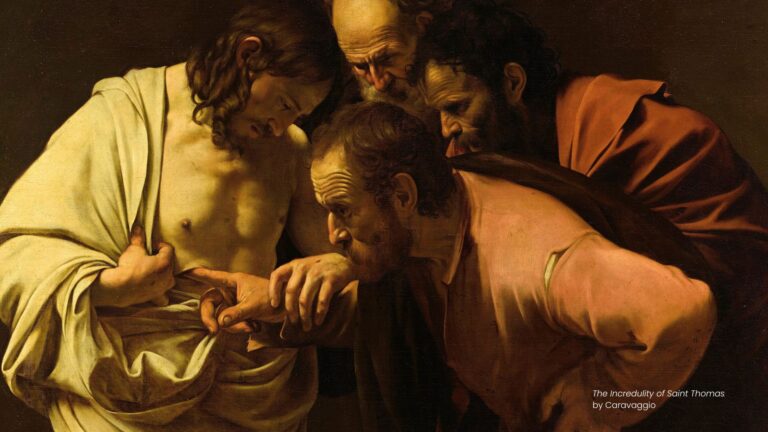Why the Physical Resurrection of Jesus Matters Today
April 15, 2025
The resurrection of Jesus Christ is the cornerstone of the Christian faith. Without it, there is no hope, no victory over death, and no promise of eternal life. But what does it truly mean that Jesus was physically resurrected? Was it merely a spiritual event, or did He rise in bodily form? The answer to this question shapes theology, history, and worldview. To grasp the significance of the physical resurrection of Christ, we must examine its theological, biblical, and historical foundations and understand how it transforms our lives today.
The Physical Resurrection: A Historical Reality
One of the most compelling aspects of Christianity is the historical reality of the resurrection. This event is not a myth or symbolic story but a documented occurrence in time and space. The Bible provides detailed accounts of Jesus’ death and resurrection, supported by multiple eyewitness testimonies, including appearing to more than five hundred people at the same time (1 Corinthians 15:3–6).
The Gospels emphasize that Jesus’ body was not a vision or a ghostly form but a tangible, physical presence. In Luke 24:39, Jesus Himself declares, “Look at my hands and my feet. It is I myself! Touch me and see; a ghost does not have flesh and bones, as you see I have.” This statement affirms the bodily resurrection, distinguishing it from mere spiritual revival. Similarly, John 20:27 records Jesus inviting Thomas to touch His wounds, confirming the physicality of His risen form.
Historical and medical perspectives reinforce this truth. Dr. William (Bill) Edwards, a medical researcher and personal friend, has studied the physical aspects of Jesus’ death and resurrection. He highlights that Jesus’ scourging and crucifixion inflicted fatal wounds, making survival impossible. Therefore, His resurrection was not a resuscitation but a miraculous act of divine power.
Theological Significance: Victory Over Death and Sin
The resurrection of Jesus signifies ultimate victory over death and sin. 1 Corinthians 15:54-57 proclaims, “Death has been swallowed up in victory. Where, O death, is your victory? Where, O death, is your sting? The sting of death is sin, and the power of sin is the law. But thanks be to God! He gives us the victory through our Lord Jesus Christ.”
Because of Jesus’ resurrection, believers have a promise of not only spiritual renewal but also physical resurrection. 1 Corinthians 15:20 calls Jesus “the firstfruits of those who have fallen asleep,” assuring us that we, too, will rise in bodily form. This is not abstract hope but a concrete reality that gives confidence and assurance to those who follow Christ.
Moreover, Jesus’ resurrection affirms the goodness of creation. In a biblical worldview, the material world is not disposable but redeemable. Romans 8:21 speaks of creation’s liberation from corruption, emphasizing that God intends to restore both humanity and the physical world. This truth challenges secular views that dismiss the body’s significance. Instead, the resurrection declares that our bodies will be transformed and glorified in the new creation.
- Shaping Biblical Worldviews: Addressing the Human Predicament in Education
- Sin and Redemption: Shaping Student Beliefs with the Solution to the Human Predicament
The Role of the Resurrection in Our Worldview
The resurrection is not just a theological belief; it influences daily life. It shapes values, priorities, and perspectives on suffering, death, and purpose. If someone truly believes in the physical resurrection, it changes how they approach hardship, relationships, and eternity.
When assessing a person’s worldview, we must ask: Does their understanding reflect belief in the resurrection? If so, they will live with eternal hope rather than temporary fear. Philippians 3:20-21 reminds us that our citizenship is in heaven and that Christ “will transform our lowly bodies so that they will be like His glorious body.” This transformation affects how we face trials, endure suffering, and pursue holiness.
A biblical worldview anchored in the resurrection also changes how students and educators engage with truth. If students grasp that Jesus conquered death, they develop a greater sense of purpose. They recognize that their lives are part of an eternal plan, not merely random events. Encouraging young believers to understand this truth equips them to make wise, faith-driven choices.
If you’re looking for practical ways to engage others in discussions about the resurrection and its implications, consider downloading my free PDF, “10 Questions to Understand Student Worldview.” These questions are designed to help you explore the foundational beliefs, behaviors, and attitudes that shape how others see the world, including how they view the resurrection of Jesus.
Experiencing the Power of the Resurrection Today
The physical resurrection is not just historical; it is a present reality that impacts believers today. Ephesians 1:19-20 declares, “His incomparably great power for us who believe… that power is the same as the mighty strength He exerted when He raised Christ from the dead.” This means that resurrection power is available to all who trust in Christ.
Practically, this truth enables Christians to overcome sin, fear, and challenges. The resurrection assures us that our struggles are temporary, and ultimate victory belongs to Christ. Romans 6:4 states, “Just as Christ was raised from the dead through the glory of the Father, we too may live a new life.” This new life is marked by transformation, hope, and spiritual strength.
For believers, this power is not just theological—it is experiential. It gives confidence in facing adversity and assurance in God’s presence. A biblical worldview rooted in resurrection power leads to resilience, joy, and steadfast faith in any circumstance.
The Hope of the Resurrection: Looking Forward
Beyond its present impact, the resurrection guarantees future hope. 1 Thessalonians 4:16-17 describes the moment when believers will be raised to eternal life: “For the Lord himself will come down from heaven… and the dead in Christ will rise first. After that, we who are still alive and are left will be caught up together with them in the clouds to meet the Lord in the air.”
This future reality transforms how Christians view life and death. Death is not the end but a transition into eternal life. Revelation 21:4 promises that God “will wipe every tear from their eyes. There will be no more death or mourning or crying or pain.” This vision of eternity encourages believers to persevere, knowing that their faith is not in vain.
Conclusion: Embracing the Transformative Power of the Resurrection
The physical resurrection of Jesus Christ is not merely an event of the past. It is the foundation of Christian faith, shaping theology, worldview, and daily life. It affirms God’s victory over death, His plan for restoration, and His power at work in believers today.
As we reflect on the resurrection, let us embrace its transformative reality. Let it shape our hope, strengthen our faith, and inspire us to live as people who believe in a risen Savior. 1 Peter 1:3 reminds us, “Praise be to the God and Father of our Lord Jesus Christ! In his great mercy he has given us new birth into a living hope through the resurrection of Jesus Christ from the dead.” May this living hope define our lives and guide our journey until the day we are united with Christ in glory.
To aid in this mission, I’ve developed a free PDF resource to explore how belief in the resurrection and other beliefs, behaviors, and attitudes shape worldview. Download my free PDF, “10 Questions to Understand Student Worldview” to help uncover core beliefs and attitudes about a person’s worldview, and the implications for life and eternity. This guide includes key discussion questions and practical insights for reinforcing a Christ-centered worldview. You can download it at the link below.
May we boldly proclaim the truth of the risen Christ, allowing His victory to shape our faith, our teaching, and our engagement with the world. If you haven’t yet used the 3DWS with your class, check out the PDF “10 Questions to Understand Student Worldview” below to get started.
- What Is the 3-D Worldview Survey?
- Take the 3-D Worldview for yourself
Key Takeaways
- Jesus’ Resurrection Was Physical and Historical – The resurrection of Jesus was not a symbolic or spiritual event but a real, bodily resurrection, confirmed by eyewitness accounts and biblical evidence. This historical reality is foundational to Christian faith.
- The Resurrection Guarantees Victory Over Death and Sin – Jesus’ resurrection is the ultimate proof of His triumph over sin and death. It assures believers of their own future resurrection and reinforces the biblical truth that God intends to redeem both humanity and creation.
- Resurrection Power Transforms Believers’ Lives Today – The resurrection is not just a past event; it actively impacts how Christians live. It shapes their worldview, strengthens their faith, and gives them hope and perseverance through life’s challenges, knowing that eternal life awaits.
#PhysicalResurrection #ChristianEducation #BiblicalWorldview





